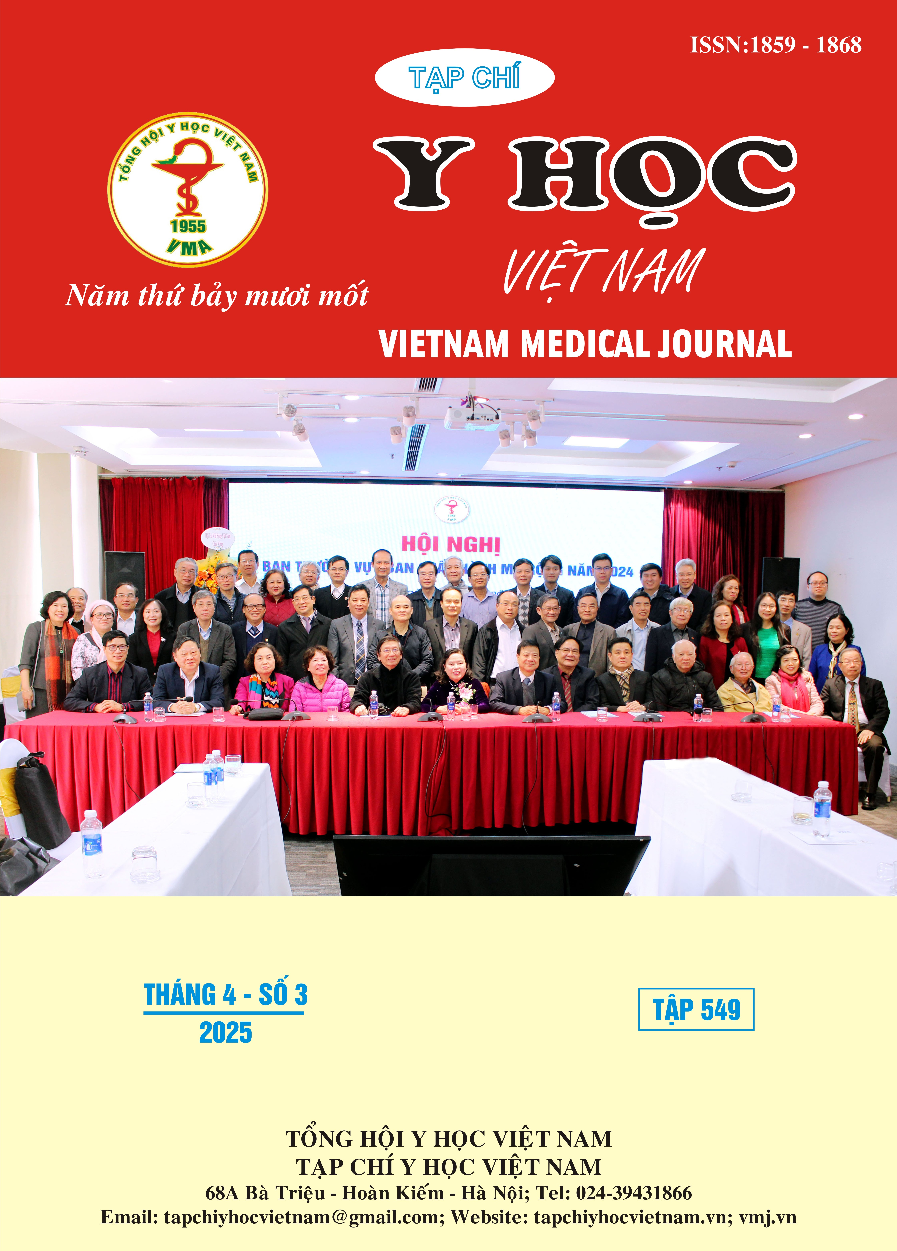THE ROLE OF RENAL ARTERY DOPPLER ULTRASOUND IN YOUNG HYPERTENSIVE PATIENTS
Main Article Content
Abstract
This study was conducted to (1) describe the characteristics of renal artery Doppler ultrasound in young hypertensive patients and (2) assess the association between Doppler parameters and both hypertension (HTN) stage and clinical factors in this population. Methods: A cross-sectional study was performed on 40 patients aged 18 to 40 who had been diagnosed with HTN based on the criteria of the Vietnam National Heart Association (VSH/VNHA 2022). All participants underwent clinical evaluation, blood pressure measurement, risk factor assessment, and renal artery Doppler ultrasound. Statistical analyses were then conducted to explore any relationship between Doppler findings and hypertension stage. Results: The participants had a mean age of 33.9 ± 5.3 years; 82.5% were male. No cases of renal artery stenosis were detected. Doppler indices, including Peak Systolic Velocity (PSV), End Diastolic Velocity (EDV), and the Renal Resistance Index (RI), all fell within normal ranges (PSV at the renal artery origin: 75.7 ± 24.4 cm/s on the right and 72.1 ± 17.7 cm/s on the left; EDV at the origin: 24.8 ± 11.4 cm/s and 24.9 ± 9.9 cm/s, respectively; RI ranged from 0.6 to 0.7). Notably, PSV, EDV, and RI tended to decrease slightly from HTN Stage 1 to Stage 2, especially at the renal artery trunk and hilum. Conclusions: The findings indicate that while most Doppler parameters (PSV, EDV, RI) remain within normal limits in young hypertensive patients, a marked decrease in PSV and EDV emerges when blood pressure reaches more severe stages, whereas RI shows minimal fluctuation—suggesting that microvascular damage is not yet pronounced. Therefore, renal artery Doppler ultrasound can detect early hemodynamic changes; however, additional tests are required to clarify the underlying causes and comprehensively assess renal function.
Article Details
Keywords
Young-onset hypertension, renal artery stenosis, Doppler ultrasound, resistance index (RI), hypertension stage
References
2. Granata A, Fiorini F, Andrulli S, et al. Doppler ultrasound and renal artery stenosis: An overview. J Ultrasound. 2009;12(4):133-143. doi:10.1016/ j.jus.2009.09.006
3. Ostchega Y, Fryar CD, Nwankwo T, Nguyen DT. Hypertension prevalence among adults aged 18 and over : United States, 2017–2018. Accessed February 28, 2025. https://stacks.cdc.gov/view/ cdc/87559
4. Thảo NP, Minh NTB, Vinh NC, et al. Nồng độ hormone và tỷ lệ u tuyến thượng thận trên bệnh nhân 18 đến 35 tuổi có chẩn đoán tăng huyết áp tại bệnh viện Đại học Y Dược TP.HCM. Tạp Chí Học Việt Nam. 2023;532(2). doi:10.51298/vmj. v532i2.7627
5. Desberg AL, Paushter DM, Lammert GK, et al. Renal artery stenosis: evaluation with color Doppler flow imaging. Radiology. 1990;177(3): 749-753. doi:10.1148/radiology.177.3.2243982
6. Makhija P, Wilson C, Garimella S. Utility of Doppler sonography for renal artery stenosis screening in obese children with hypertension. J Clin Hypertens. 2018;20(4):807-813. doi:10.1111/ jch.13241
7. Chen Q, He F, Feng X, et al. Correlation of Doppler parameters with renal pathology: A study of 992 patients. Exp Ther Med. 2014;7(2):439-442. doi:10.3892/etm.2013.1442


